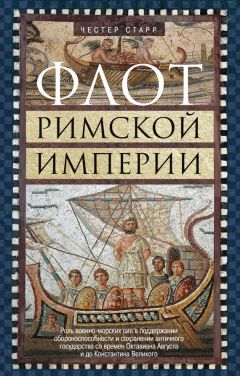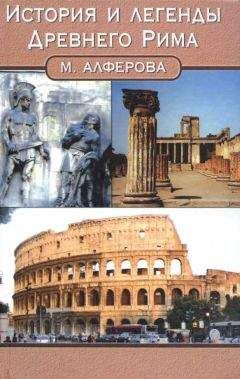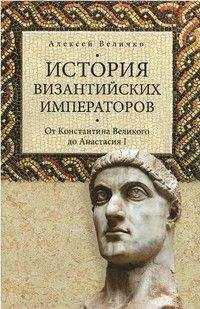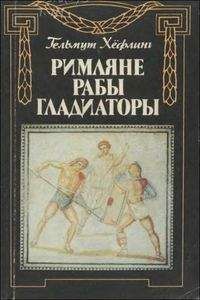Роберт Напп - Скрытая жизнь Древнего Рима. Рабы и гладиаторы, преступники и проститутки, плебеи и легионеры… Жители Вечного города, о которых забыла история
Книги, составленные в основном из первоисточников, позволяют быть в курсе доступных сведений о нужном периоде. Я особо упомяну: Jane F. Gardner and Thomas Wiedemann’s The Roman Household: A Sourcebook (London: Routledge, 1991); Mary R. Lefkowitz и Maureen B. Fant’s Women’s Life in Greece and Rome: A Source Book in Translation (Baltimore: Johns Hopkins University Press, 1992); Women in the Classical World: Image and Text, ред. Elaine Fantham et al. (New York: Oxford University Press, 1994); Suzanne Dixon’s Reading Roman Women: Sources, Genres, and Real Life (London: Duckworth, 2001). О юридическом положении женщин см.: Judith Evans Grubbs, Women and the Law in the Roman Empire: A Sourcebook on Marriage, Divorce, and Widowhood (London: Routledge, 2002).
Сборников научных работ огромное множество, и хотя, как правило, предметом их изучения является жизнь и деятельность элиты, особенно в литературных и исторических исследованиях, в них можно найти и достаточно информации о женщинах из простонародья. Особенно интересны в этом смысле книги: Women’s History and Ancient History, ред. Sarah B. Pomeroy (Chapel Hill: University of North Carolina Press, 1991), а также Women and Slaves in Greco-Roman Culture: Differential Equations, ред. Sandra R. Joshel and Sheila Murnaghan (London, New York: Routledge, 1998) с ее главами, посвященными «невидимым».
Дополнительный материал дают научные работы, посвященные какой-либо конкретной теме. Приведенный выше список работ позволяет ознакомиться с интересными трактовками. Я использовал много материала из Египта, сделать это мне позволили несколько отличных трудов о папирусах. Особенно упомяну: Women and Society in Greek and Roman Egypt: A Sourcebook, ред. Jane Rowlandson (Cambridge, UK: Cambridge University Press, 1998). Работа Roger Bagnall’s тоже очень помогла мне (Roger S. Bagnall и Bruce W. Frier, The Demography of Roman Egypt (Cambridge, UK: Cambridge University Press, 1994) и Roger S. Bagnall и Raffaella Cribiore, а также Evie Ahtaridis, Women’s Letters from Ancient Egypt, 300 BC – AD 800 (Ann Arbor: University of Michigan Press, 2006). К сожалению, монографий о некоторых сторонах жизни простых женщин не так много. Однако есть ценные исключения: Susan Treggiari’s ‘Lower Class Women in the Roman Economy’, Florilegium 1 (1979). C. 65–86 и ‘Jobs for Women’, American Journal of Ancient History 1 (1976). C. 76—104, а также статьи Natalie Boymel Kampen’s, позволяющие увидеть роль простой женщины в искусстве: Image and Status: Roman Working Women in Ostia (Berlin: Gebr. Mann Verlag, 1981); ‘Material Girl: Feminist Confrontations with Roman Art’, Arethusa 27 (1994). C. 111–137; и ‘Social Status and Gender in Roman Art: The Case of the Saleswoman’, в: Eve D’Ambra, Roman Art in Context: An Anthology (Englewood Cliffs, NJ: Prentice Hall, 1993). C. 115–132. Beryl Rawson рассматривает женщин в эссе: ‘Family Life among the Lower Classes at Rome in the First Two Centuries of the Empire’, Classical Philology 61 (1966). C. 71–83; то же делает и Walter Scheidel в работе ‘The Most Silent Women of Greece and Rome: Rural Labor and Women’s Life in the Ancient World’, Greece and Rome 42 (1995). C. 202–217. Некоторый интерес представляет John R. Clarke, Art in the Lives of Ordinary Romans: Visual Representation and Non-Elite Viewers in Italy, 100 BC – AD 315 (Berkeley & Los Angeles: University of California Press, 2003). Я мало использовал чисто археологический материал; такие работы, как Penelope M. Allison’s Pompeian Households: An Analysis of the Material Culture (Los Angeles: Cotsen Institute of Archaeology, UCLA, Monograph 42, 2004) и Lindsay Allason-Jones’s Women in Roman Britain, 2-е изд. (York: Council for British Archaeology, 2005) и Daily Life in Roman Britain (Westport, CT: Greenwood, 2008) при более внимательном изучении могут быть очень информативными.
Работы о семье и домашнем хозяйстве часто затрагивают жизнь простых женщин: K. R. Bradley, Discovering the Roman Family: Studies in Roman Social History (New York: Oxford University Press, 1991); Suzanne Dixon, The Roman Family (Baltimore: Johns Hopkins University Press, 1992) и Jane F. Gardner, Family and Familia in Roman Law and Life (Oxford: Clarendon Press, 1998). О материнстве и семье см.: Suzanne Dixon, The Roman Mother (London: Routledge, 1988, 1990); Beryl Rawson, Marriage, Divorce, and Children in Ancient Rome (Oxford: Clarendon Press, 1991) и Susan Treggiari, Roman Marriage: Iusti Coninges from the Time of Cicero to the Time of Ulpian (Oxford: Clarendon Press, 1991). Я назвал только несколько работ, в библиографии их значительно больше. О сексе см.: Suzanne Dixon, ‘Sex and the Married Woman in Ancient Rome’, в: Early Christian Families in Context: An Interdisciplinary Dialogue, ред. David L. Balch и Carolyn Osiek (Grand Rapids: W. B. Eerdmans, 2003). C. 111–129; о контрацепции и абортах см.: J. M. Riddle, Contraception and Abortion from the Ancient World to the Renaissance (Cambridge: Harvard University Press, 1992) и E. Eyben, ‘Family Planning in Graeco-Roman Antiquity’, Ancient Society 11/12 (1980/1). C. 5—82; о беззащитном положении детей см.: William V. Harris, ‘Child Exposure in the Roman Empire’, Journal of Roman Studies 84 (1994). C. 1—22; о жизни вдов см.: P. Walcot, ‘On Widows and their Reputation in Antiquity’, Symbolae Osloenses 66 (1991). C. 5—26.
Для получения информации о женщинах в раннем христианстве особенно важны работы Patricia Cox Miller, Women in Early Christianity: Translations from Greek Texts (Washington, DC: Catholic University of America Press, 2005); Gillian Clark, Women in Late Antiquity: Pagan and Christian Lifestyles (Oxford: Oxford University Press, 1993); Margaret Y. MacDonald, ‘Reading Real Women through the Undisputed Letters of Paul’, в: Women & Christian Origins, ред. Ross Shepard Kraemer и Mary Rose D’Angelo (New York: Oxford University Press, 1999). C. 199–220 и Patricia Clark, ‘Women, Slaves and the Hierarchies of Domestic Violence: The Family of St. Augustine’, в: Women and Slaves in Greco-Roman Culture: Differential Equations, ред. Sheila Murnaghan и Sandra R. Joshel (London, New York: Routledge, 1998). C. 109–129.
Упомянутые сравнительные данные из Бразилии можно найти в: Mary C. Karasch, Slave Life in Rio de Janeiro, 1808–1850 (Princeton: Princeton University Press, 1987).
Глава 3. Зависимость и выживание: беднякиФундаментальным трудом давно уже считается: H. Bolken-stein’s Wohltätigkeit und Armensflege in vorchristlichen Altertum (Utrecht, 1939), который часто цитируется в: A. R. Hands’s Charities and Social Aid in Greece and Rome (Ithaca, 1968). Затем работа Marcus Prell, Sozialökonomische Untersuchungen zur Armut im antiken Rome: Von den Gracchen bis Kaiser Diokletian (Stuttgart: F. Steiner, 1997). Целевые исследования включают в себя J. Kolendo, ‘The Peasant’, в: The Romans, ред. Andrea Giardina, пер. L. G. Cochrane (Chicago: University of Chicago Press, 1993). C. 199–213; C. R. Whit-taker, ‘The Poor’. C. 272–299. Новаторское эссе Teresa Morgan’s Popular Morality in the Early Roman Empire (Cambridge, UK: Cambridge University Press, 2007) подробно разбирает басни и пословицы; с образцами греческой народной литературы можно познакомиться по: Anthology of Ancient Greek Popular Literature, ed. William Hansen (Bloomington, IN: Indiana University Press, 1998); с баснями – в работе: Babrius and Phaedrus, ed. и пер. с комментариями B. E. Perry (Cambridge, MA: Harvard University Press, 1975). Сравнительные исследования Древнего мира включают в себя: Thomas W. Gallant, Risk and Survival in Ancient Greece: Reconstructing the Rural Domestic Economy (Stanford, CA: Stanford University Press, 1991); G. E. M. de Ste. Croix, The Class Struggle in the Ancient Greek World from the Archaic Age to the Arab Conquest (Ithaca, NY: Cornell University Press, 1981) и G. Hamel, Poverty and Charity in Roman Palestine, First Three Centuries С.E. (Berkeley: University of California Press, 1990). Большой интерес в этом отношении представляют эссе: Bronislaw Geremek, Poverty: A History, пер. Agnieszka Kolakowska (Oxford: Oxford University Press, 1994); Eric R. Wolf, Peasants (Englewood Cliffs, NJ: Prentice-Hall, 1966) и G. Sjoberg, The Preindustrial City, Past and Present (New York: The Free Press, 1960). Для своей книги я черпал много полезного материала в работе: James C. Scott, Weapons of the Weak: Everyday Forms of Peasant Resistance (New Haven, CT: Yale University Press, 1985).
Глава 4. Жизнь в неволе: рабыО рабстве в греко-римском обществе написано множество трудов, из них фундаментальными трудами являются: Thomas E. J. Wiedemann, Greek and Roman Slavery: A Sourcebook (Baltimore: Routledge, 1990), а также работы: Keith Bradley, Slaves and Masters in the Roman Empire (New York, Oxford: Oxford University Press, 1987); Slavery and Rebellion in the Roman World, 140—70 BC (Bloomington: Indiana University Press, 1989) и Slavery and Society at Rome (Cambridge, UK: Cambridge University Press, 1994), в которых также приведена обширная библиография. Столь же важным является замечательное исследование: Sandra Joshel, Slavery in the Roman World (New York: Cambridge University Press, 2010). M. I. Finley’s Ancient Slavery and Modern Ideology с новым предисловием Brent D. Shawn (Princeton: Markus Wiener, 1998). Общий краткий обзор дает: Yvon Thébert, ‘The Slave’, в: The Romans, ed. Andrea Giardina, пер. L. G. Cochrane (Chicago: University of Chicago Press, 1993). C. 138–174. У Jennifer A. Glancy’s Slavery in Early Christianity (Oxford: Oxford University Press, 2002) имеется множество полезных наблюдений; новое направление в изучении предлагает Sandra Joshel’s Work, Identity, and Legal Status at Rome (Norman, OK: University of Oklahoma Press, 1992). Представление о сопротивлении крестьян, его видах, а также размышления о деревенской жизни обогащают картину внутреннего мира рабов: James Scott’s Weapons of the Weak: Everyday Forms of Peasant Resistance (New Haven, CT: Yale University Press, 1985). Об археологии см.: F. H. Thompson, The Archaeology of Greek and Roman Slavery (London: Duckworth, 2003). О сравнительных материалах из США: W. Blassingame’s The Slave Community: Plantation Life in the Antebellum South (Oxford: Oxford University Press, 1979); Mary C. Karasch’s Slave Life in Rio de Janeiro, 1808–1850 (Princeton: Princeton University Press, 1987) для Бразилии; Jane Webster’s ‘Less Beloved: Roman Archaeology, Slavery and the Failure to Compare’, Archaeological Dialogues 15 (2008). C. 103–123, обсуждают археологические и сравнительные артефакты. В эссе Peter Garnsey’s Ideas of Slavery from Aristotle to Augustine (Cambridge, UK: Cambridge University Press, 1996) рассматривается отношение элиты к рабству, а работа William Fitzgerald’s Slavery and the Roman Literary Imagination (Cambridge, UK: Cambridge University Press, 2000) посвящена вопросу использования образов рабов в литературе элиты. Niall McKeown’s The Invention of Ancient Slavery? (London: Duckworth, 2007) представляет интересное сравнение различных подходов ученых к изучению рабства в греко-римском обществе; он показывает, насколько конкретное исследование рабства зависит от предвзятого мнения ученого. Назову еще несколько статей. Keith Hopkins’s ‘Novel Evidence for Roman Slavery’, Past and Present 138 (1993). C. 3—27, считает The Life of Aesop серьезным свидетельством о рабстве; Keith Bradley’s ‘Animalizing the Slave: The Truth of Fiction’, Journal of Roman Studies 90 (2000). C. 110–125 объясняет, как использовать художественные сочинения для познания рабства. Patricia Clark’s ‘The Family of St. Augustine’, в: Women and Slaves in Greco-Roman Culture: Differential Equations, ред. Sandra R. Joshel и Sheila Murnaghan (London: Routledge, 1998). C. 109–129, описывает сложную семейную жизнь Августина, в том числе отношения с рабами; также очень полезный материал о Египте имеется в: Roger S. Bagnall, ‘Slavery and Society in Late Roman Egypt’, в: Law, Politics and Society in the Ancient Mediterranean World, ред. B. Halpern и D. Hobson (Sheffield, UK: Sheffield Academic Press,1993). C. 220–240.




